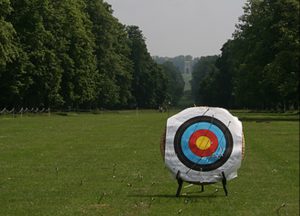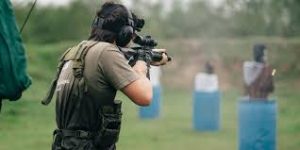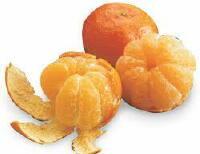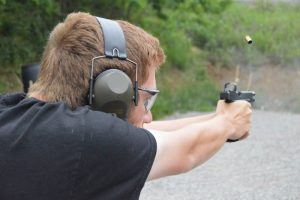 Sometimes the teacher fails to tell you the crucial, most important thing that they should tell you… not out of malice, but out of not knowing that it matters.
Sometimes the teacher fails to tell you the crucial, most important thing that they should tell you… not out of malice, but out of not knowing that it matters.
No matter what is the topic, the area, this happens all the time.
If you don’t get the results your teacher promised, this is probably what’s going it, this is probably what went on.
Why wide angle, big picture attitude on the hammer exercises is the winning way to do it?
How you do anything is how you do everything.
If you bring narrow cone of vision to the hammer exercises, it is an indication that you want to win at everything… and you are tight as a drum. It doesn’t matter whether you are focusing on the hammer or on the ball, or on catching the ball, or not dropping it, either those take away from the effectiveness of the exercise.
What is my purpose of the hammer exercise for you? To create more white matter, to increase your TLB, to crate new connections between your rigid left brain and your creative right brain.
Those tight focuses will prevent the exercise to do the most important thing: prepare you for a wide angle view of life, spatial intelligence, will fail to prepare you for the right hemisphere to bring creativity and fun into your life, fail to prepare you to see more, and connect more dots, consciously and unconsciously.
To be more flexible. For ease and grace. For a life lived powerfully, living a life you love.
Why doesn’t Michael Lavery tell you this? I don’t think he knows.
 When someone trains thousands of people, but only has 10 winning cases, you can bet your sweet arse that he is not seeing and therefore he is not saying something important to you, instructions that people need to know and obey to get the same results.
When someone trains thousands of people, but only has 10 winning cases, you can bet your sweet arse that he is not seeing and therefore he is not saying something important to you, instructions that people need to know and obey to get the same results.
He, himself, if you watch him in the video, talks, does the multiplication table, the 31 digits of pi, the US states and state capitals, and never just does the hammer exercise.
He doesn’t say, but the moment you just try to win and that game, you produce a tightening that beats the purpose.
This is true, by the way, for any accomplishment.
I got present to the weather, to my environment, to the noises outside of my window when I took playing the violin, playing the guitar, doing architecture, reading, connecting to Source, practicing energies, etc. etc. Even learning languages. Or writing articles.
 I expand my cone of vision instead of what is automatic: narrowing it.
I expand my cone of vision instead of what is automatic: narrowing it.
Start getting present at your cone of vision when you do something, anything, and practice widening it.
Start getting present to your self-importance. You equating your value with your performance. You hating to fail. Hating to be clumsy. Hating to drop the ball.
They will render you not to get the results from this exercise, and I will go out on a limb to say: from any course, exercise you start. You won’t get the results until you let go of that self-importance.
This is a principle, and it is true and tried in every area of life, competing, being strangled, being attacked, climbing a wall, a rock… these are examples from my favorite genre of books: thriller.
You can also avoid tunnel vision this way… never noticing that you are on the wrong path, never noticing that it is all about you, that you are trying to win, be right, be considered important, be smart, etc.
 All are misery makers and Dark Side as well.
All are misery makers and Dark Side as well.
Some of my students are more in tune with what they are doing than others, especially if they can compare notes with someone else who is also doing the same exercise, like Amy whose son also does the hammer exercises.
He has been focusing on the hammer, Amy has been focusing on the ball… I have been focusing on nothing.
I do the hammers the way I do my life. And so do you.
Here is our email exchange:
ME: I don’t focus on anything. I use a wide angle focus…
Maybe that is the key? muscletest says: yes. I allow the exercise to do what the exercise can do.AMY: Hmm. Wow. Ok. That changes things than. You are bouncing the ball but aware of surroundings. That seems much harder.
Thank youME: it is if you normally walk around with narrow cone of vision. My cone of vision is 30% when I do the hammers, yours is 3%.
My overall, normal cone of vision is 50%, yours is 7%.
When you can bring a wider cone of vision to life, to everything, including your health, your work, my webinars, life becomes more integrated and easier.
It takes work and a lack of trying (really!) to succeed widening your cone of vision.
Thank Amy if you have a chance. Without her asking the crucial question: what do you focus on? I would not have looked… because I would be just doing life and the hammers like I do everything… and how, I guess, Michael Lavery does it too.
PS: Turns out that this, tight focus, being fixated on anything, success, getting the job done, keeping a capacity open, getting validation, being liked, getting what you want, etc. etc. etc. causes the failure, causes you to not get what you want.
More on that in my Sunday call… today, on July 26. Most probably a turning point type of call, if there has ever been one.
It’s not for everybody. It is very high vibration, full of distinctions you probably have no idea if they are eaten or drunk… Or if you do, you only have a ‘worldly’ knowledge about them, which is a nice way to say: approximately but not really.
Most of these Sunday calls have enough value in them, for the right person, to sell them for hundreds of dollars… But of course to be the right person is a problem for most people. That is why I sell these calls for a puny $25 a pop, because the value of a program is not what it can do, but what it will likely do for the buyer.
I bought the Email Players newsletter. The first three issues doubled my income.
I bought a printed book, also from Ben Settle, for a thousand dollars. I am still mining the results. It has resulted in me having a whole lot more self-respect and a whole larger future than I could have expected at the time.
I actually got myself better than well as a result, and the book wasn’t even about health. But when you have a future, you want to be well for it… and I did. And I got. Well.
Anyway, if you are the right person, you can buy this Sunday call for $25 if you want it. Or if you are brave, you can even subscribe to these calls.
What’s the difference between loose focus and tight focus, and when should you use each?
There are indeed two types of focus. Peripheral focus (or ambient focus) is characterized by relaxed eye muscles and provides for a wide field of view. We use ambient focus for reading, computer work and driving. It is the predominant mode for our eyes throughout our daily lives and under most circumstances. Acute focus (fovial or central vision focus) involves the conscious and intense contraction of your eye muscles to narrow your focal field of view. You are likely to use fovial focus when repairing a chain link necklace with very small links, assembling a small scale model or performing other close-up work.
The focus I am talking about that robs you of being able to move in the right direction, really, is the tight focus.


… and thank you Miko.
Will start applying this today in my hammer drills and more. I had no idea. Thank you, Amy, thank you, Sophie.